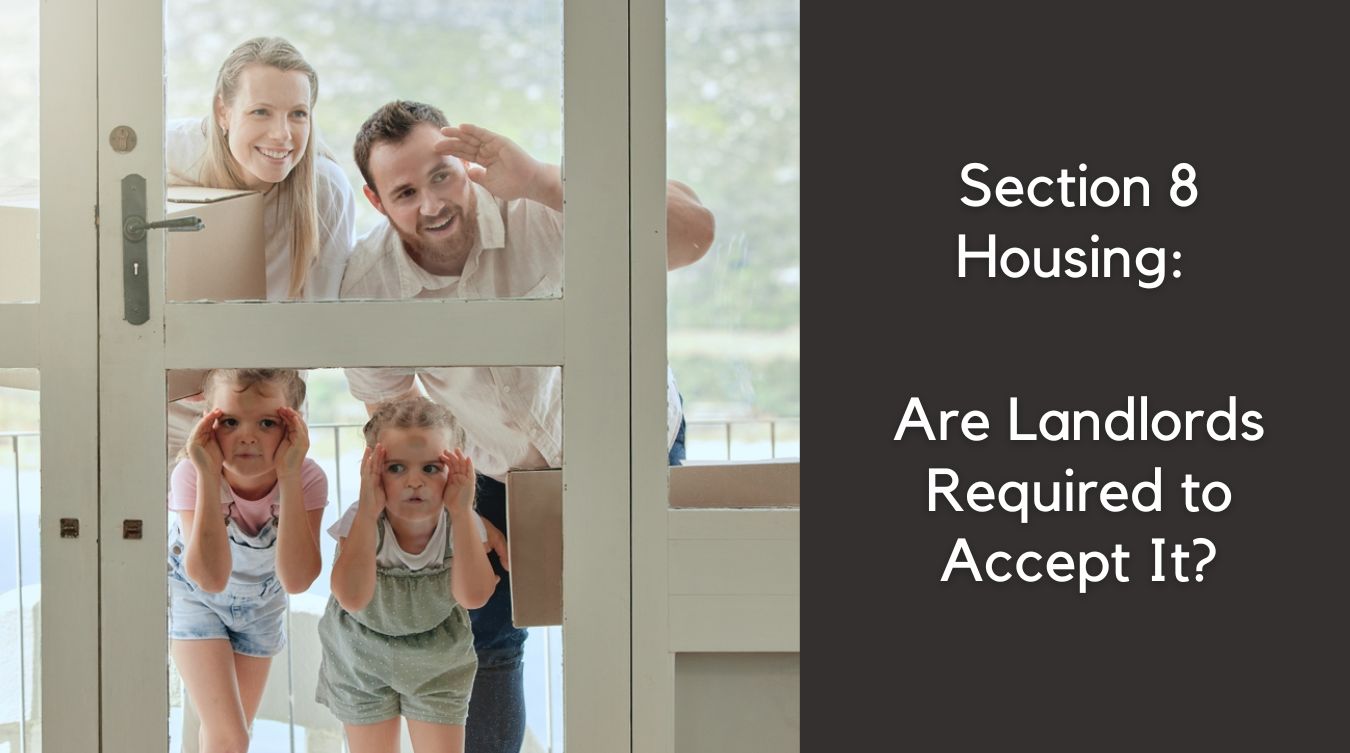
Section 8 Housing: Are Landlords Required to Accept It?
April 28, 2025 | Industry News, Landlord Education, Property Ownership, Resident Education
Do you remember the classic Clint Eastwood film The Good, The Bad, and The Ugly? For many landlords, working with the Section 8 Housing Voucher Program can feel similar—there are clear benefits, but also challenges that require additional effort and consideration.
As of December 2022, over 7.5 million individuals across the U.S. lived in households supported by housing vouchers. In Riverside County alone, more than 10,000 residents benefit from this federally funded rental assistance.
Established under the Housing and Community Development Act of 1974, the Section 8 program was created to ensure that low-income families could access safe, decent, and affordable housing in the private rental market—outside of traditional public housing.
For decades, many private landlords declined participation due to administrative burdens and perceived complications. However, in recent years, California’s legal landscape has shifted significantly.

Legal Obligations for Landlords
Effective January 1, 2020, California enacted Senate Bill 329 and Senate Bill 222, which prohibit landlords from rejecting applicants solely based on their use of a housing voucher. This includes Section 8, VASH (Veterans Affairs Supportive Housing), and other forms of rental assistance.
Housing vouchers are now legally recognized as a protected source of income under the California Fair Employment and Housing Act (FEHA). As a result, landlords may not advertise or indicate in any way that they do not accept vouchers. Doing so is considered discriminatory under Fair Housing laws and may result in fines, legal action, and reputational damage.
These laws are actively enforced through complaint investigations and “mystery shopping” practices conducted by Fair Housing agencies.

What Landlords Must Know About Voucher Applicants
When screening residents with housing vouchers, landlords must follow specific guidelines:
- Income Qualification: Income multipliers (e.g., 3x rent) must be based only on the applicant’s portion of the rent—not the full amount. For example, if rent is $1,500 and the tenant’s responsibility is $300, the income qualification must be based on the $300.
- Credit Screening: Landlords may not disqualify voucher holders based on credit scores alone. However, screening for rental history, prior evictions, and background checks remains permissible.
- Additional Requirements: Participating in the program entails administrative steps such as a housing authority inspection, habitability certification, and lease approval—all of which may extend the leasing timeline.
How the Voucher Qualification Process Works
Applicants seeking Section 8 assistance must:
- Join a waitlist, often months or years long due to high demand
- Select a housing region and meet income limits set by local agencies
- Verify legal U.S. residency for at least one household member
- Undergo background checks, with exclusions for certain offenses
From “No Section 8” to Inclusive Advertising
In the past, landlords frequently used phrases like “No Section 8” in their listings due to procedural delays. Today, such statements are prohibited under California law.
This includes language used in online listings (Craigslist, Zillow, personal websites), printed ads, and communications from leasing staff. All employees and agents must be trained to respond appropriately to voucher inquiries. Stating “we do not accept vouchers” is now grounds for a Fair Housing violation.

Dispelling Section 8 Myths
Some landlords worry about increased risks with voucher tenants. However, Section 8 residents are bound by the same lease terms as all other tenants. Violations—such as non-payment, damage, or illegal activity—can still result in eviction and legal action.
Additionally, tenants risk losing their voucher if they breach lease terms, which provides additional incentive for program compliance. The accountability built into the program often results in long-term tenancies and reliable rental income.
Additional Protected Classes
In addition to housing voucher recipients, military personnel and veterans are also covered by California’s source-of-income protection laws. These groups may not be discriminated against based on how they pay rent.
What It’s Really Like to Lease to a Section 8 Tenant
The qualification process for Section 8 renters is extensive. At Management One, we work closely with the Riverside and San Bernardino County Housing Authorities, each of which has a unique approval process.

Riverside County Requirements
To lease to a Section 8 tenant in Riverside County, both the management company and the resident must complete a 17-page packet. Alongside this packet, landlords must submit:
- IRS documentation confirming the EIN
- A voided check
- The signed management agreement
- A completed W-9 for Management One
- A signed owner statement verifying homeownership
Once submitted to the caseworker, the packet is forwarded to the RFTA (Request for Tenancy Approval) department. This team reviews the applicant’s income, rent amount, and utility costs using a sliding affordability scale. The analysis includes whether appliances are gas or electric and adjusts for utility provider rates.
If the proposed rent exceeds what is deemed affordable for the applicant, the RFTA department will submit a counteroffer—sometimes only $50 lower, other times up to $500 or more. If the reduced amount is acceptable to the landlord, the process continues. If not, the application is denied, though landlords must ensure the same rental terms would also disqualify a non-voucher tenant to avoid discriminatory practices.
After approval, our team performs a limited credit review (looking for prior evictions or rental debt), verifies rental references, and confirms the tenant earns 3x their portion of the rent. The applicant must then submit their portion as a holding deposit.
Meanwhile, the property must undergo a HUD inspection before move-in. One of the most common reasons for failed inspections is non-compliant GFCI outlets near water sources, which we proactively address during property rehabs. If a property fails, landlords have 10 days to correct issues before re-inspection.
It’s important to note: No tenant may move in until the home passes inspection, regardless of what was listed in the lease agreement.

San Bernardino County Requirements
San Bernardino County follows a similar process, with a few additional documentation requirements. In addition to the packet:
- A copy of the deed must be submitted
- A W-9 is required for each owner listed on the deed
- If the property is in a trust, the full trust documents and W-9s must be provided
- The management agreement and a W-9 for Management One are also required
Unlike Riverside County, San Bernardino often asks landlords to pre-qualify the applicant before the housing packet is submitted.
Once approved, HUD schedules an inspection, and landlords must resolve any cited issues before the tenant may take occupancy. First payments typically take 4–6 weeks after move-in. Thereafter, HUD payments are deposited like clockwork on the 1st of the month.

Ongoing Management and Communication with HUD
After a Section 8 tenant moves in, ongoing communication with HUD is required. The agency is often understaffed, and changes—such as updates to a tenant’s income—may take 4–6 weeks to process. Payment adjustments and recertification notices are issued regularly, sometimes up to six times per year, plus one annual recertification.
Although the program has its complexities, we’ve found that understanding the process and working within both HUD’s and Management One’s frameworks enables us to better serve our residents and protect our property owners’ interests.










